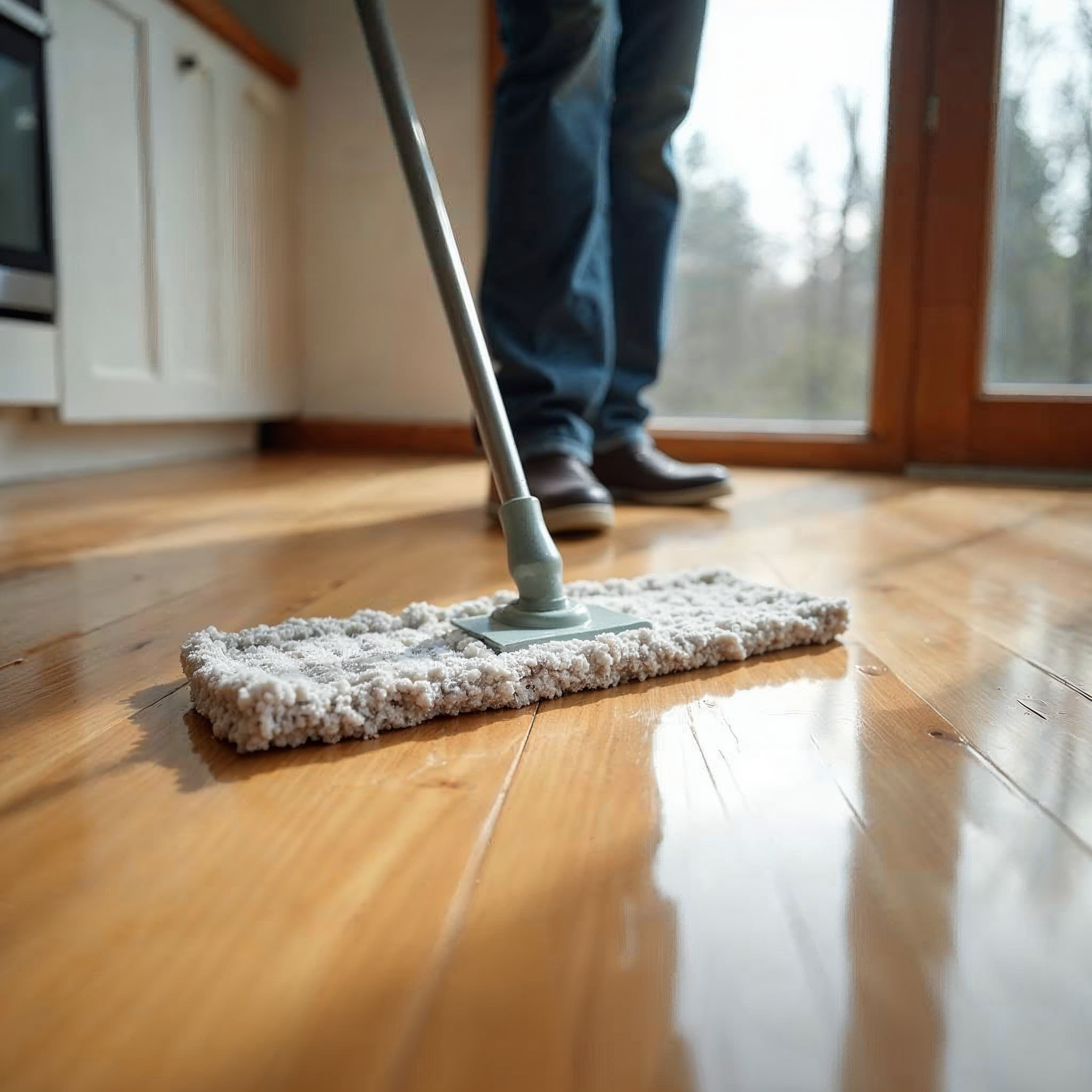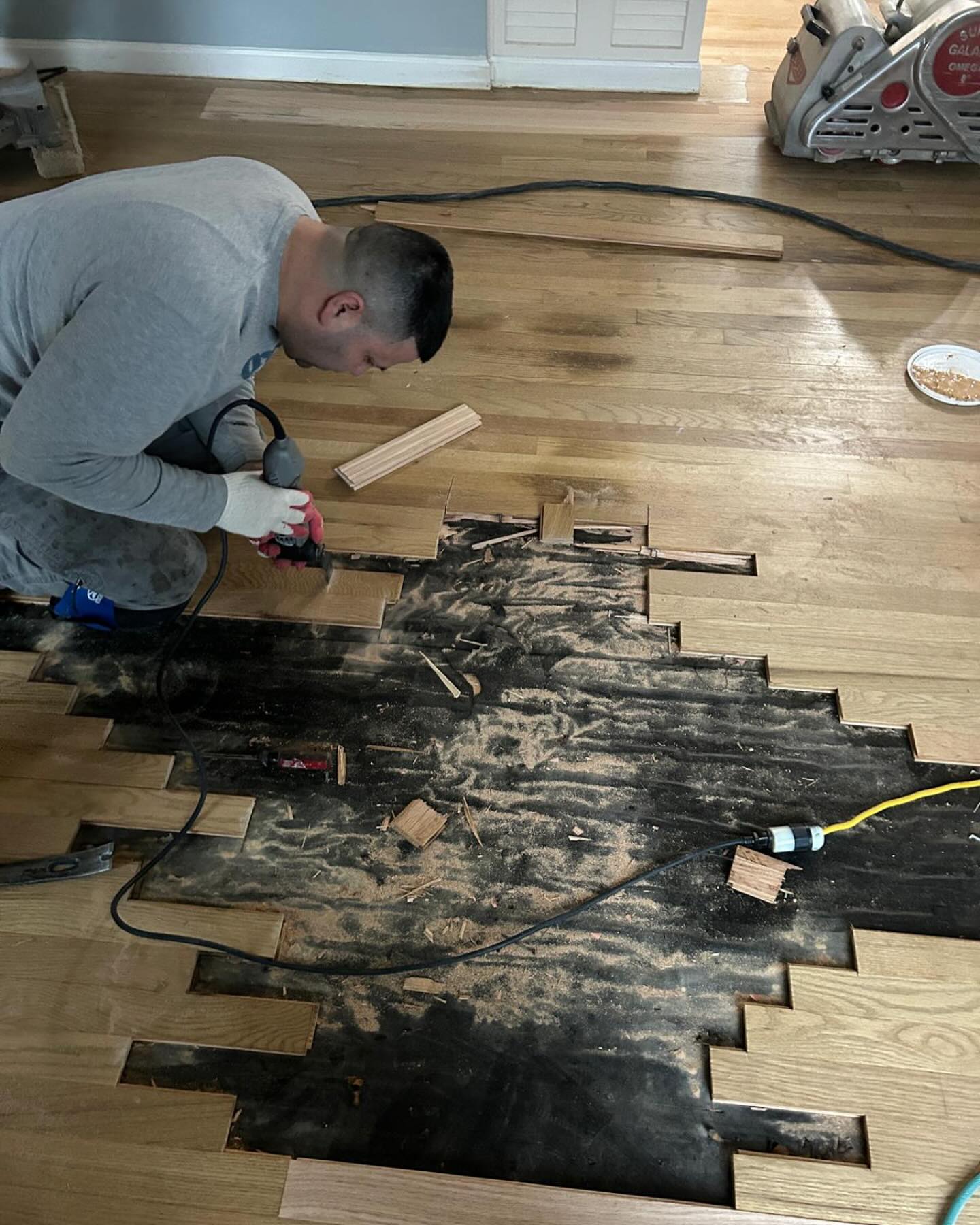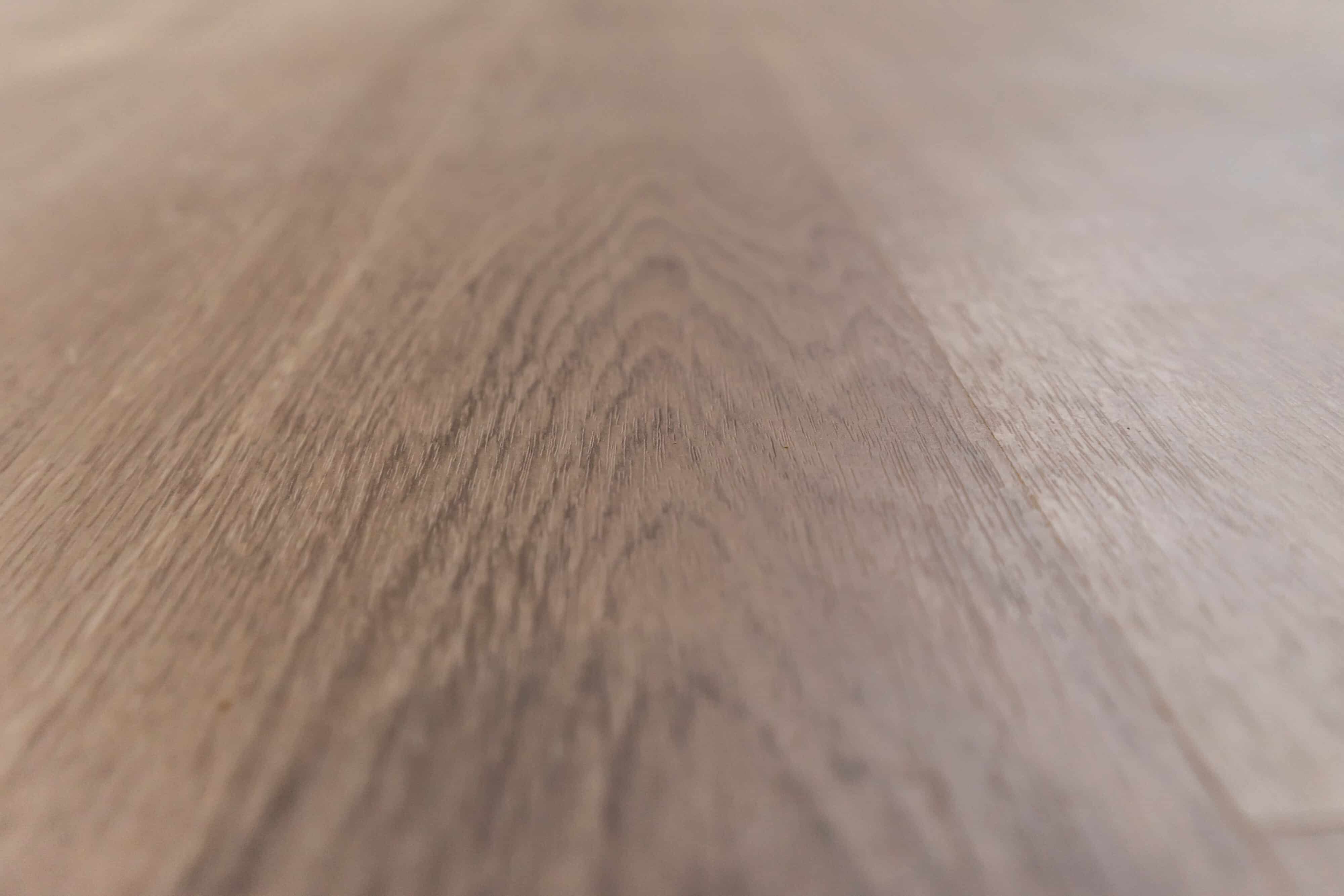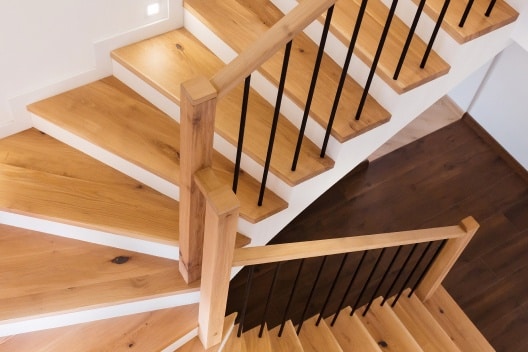The Ultimate Guide to Maintaining Your Hardwood Floors
Hardwood Floor Maintenance: Essential Tips for Long-Lasting Beauty
Most hardwood floors lose their shine far sooner than they should. You’ve probably tried cleaning, only to see scratches and dull spots creep in. This guide on hardwood floor maintenance will give you simple floor care tips that keep your floors looking fresh and lasting longer.
Understanding Your Hardwood Floors

Types of Hardwood Finishes
Before jumping into maintenance, it’s important to know what type of finish your floors have. Different finishes require different care approaches. The most common types are:
Polyurethane: Water or oil-based clear coat that creates a plastic-like shield
Wax: Traditional finish that penetrates the wood and creates a low-luster appearance
Shellac: One of the oldest floor finishes, less common in modern homes
Oil: Penetrating finish that brings out the natural beauty of wood
The finish type determines how you’ll clean and maintain your floors. If you’re unsure, try the water droplet test: place a small drop of water on your floor. If it beads up, you likely have a surface finish like polyurethane. If it soaks in, you probably have an oil or wax finish.
Why Proper Maintenance Matters
Regular hardwood floor maintenance isn’t just about appearances. Proper floor care:
Prevents expensive repairs or refinishing
Maintains your home’s value
Reduces allergens and improves indoor air quality
Extends the lifespan of your floors by decades
Daily Hardwood Floor Maintenance
Preventative Measures
The best floor care starts with prevention. These simple habits will keep your floors looking beautiful:
Use doormats at all entrances to catch dirt, small stones, and moisture before they reach your floors
Remove shoes when entering your home
Apply felt pads to furniture legs to prevent scratches
Trim pet nails regularly to minimize scratch marks
Use area rugs in high-traffic zones
Control humidity levels (35-55% is ideal) to prevent wood expansion and contraction
Regular Cleaning Routine

For day-to-day cleaning:
Sweep or dust mop daily in high-traffic areas using a microfiber mop that attracts dust rather than pushing it around
Vacuum weekly with a floor attachment (avoid beater bars that can damage wood)
Wipe up spills immediately to prevent water damage and staining
Deep Cleaning Techniques
Monthly Cleaning Process
Once a month, give your floors extra attention:
Clear the area of furniture and rugs when possible
Sweep thoroughly to remove all loose debris
Use a manufacturer-approved cleaner specific to your floor finish
Dampen (not soak) a microfiber mop with the cleaning solution
Clean in the direction of the wood grain
Allow floors to dry completely before replacing furniture
What Products to Use and Avoid
Good choices:
pH-neutral cleaners made for hardwood
Manufacturer-recommended products
Simple solutions like tea (for darker woods) or vinegar-water mixtures (only on polyurethane finishes, diluted 1:10)
Never use:
Steam cleaners (moisture can warp wood)
Oil soaps (they leave residue)
Ammonia or abrasive cleaners (they damage finishes)
Wax on polyurethane finishes (they don’t bond properly)
Excess water (can lead to warping, cupping, or discoloration)
Seasonal Hardwood Floor Maintenance
Spring and Summer Care
Warmer months bring humidity challenges:
Monitor indoor humidity levels and use dehumidifiers if needed
Close curtains during peak sunlight hours to prevent UV fading
Check for signs of moisture damage as humidity rises
Clean more frequently as outdoor activities increase foot traffic
Fall and Winter Care
Cold weather creates different challenges:
Use humidifiers to prevent wood shrinkage and cracking
Place water trays near heat sources to add moisture to the air
Clean up winter salt or snow immediately to prevent damage
Allow wet boots to dry away from hardwood surfaces
Dealing with Common Problems
Removing Scratches and Scuffs
For light scratches:
Use a hardwood floor touch-up kit matching your floor color
Try a walnut or similar colored wood crayon to fill in scratches
Buff with a soft cloth after applying any filler
For scuff marks:
Rub with a tennis ball on the end of a broomstick
Use a pencil eraser for stubborn marks
Apply baking soda on a damp cloth for gentle buffing
Addressing Water Damage
If you catch water damage early:
Dry the area immediately with clean towels
Place a fan to speed drying
Check for water beneath the boards by pressing to feel for “give”
Monitor for mold or mildew growth in the following weeks
For white water spots:
Apply a small amount of mayonnaise and let sit for 5 minutes
Buff with a soft cloth
Reapply floor polish if needed
Professional Maintenance

When to Call the Pros
Some situations require professional help:
Deep scratches or gouges that penetrate the finish
Widespread water damage or warping
Persistent squeaking or movement in boards
Fading or discoloration across large areas
Signs of insect damage or wood rot
Professional Refinishing Process
A typical refinishing process includes:
Assessment of floor condition and finish type
Preparation of the space (removing furniture, sealing vents)
Sanding to remove the old finish and damage
Staining (if desired) to change or refresh color
Finishing with multiple coats of protective sealer
Curing time (usually 24-72 hours before light use)
Most hardwood floors need refinishing every 7-10 years with proper care.
Creating a Maintenance Schedule
Weekly Tasks
Sweep or vacuum with soft attachment
Check for new scratches or damage
Dust mop with microfiber cloth
Monthly Tasks
Deep clean with proper hardwood cleaner
Inspect for loose boards or finish issues
Check and replace furniture pads as needed
Yearly Tasks
Assess overall condition
Apply maintenance coat if recommended
Consider professional cleaning
Check humidity control systems
Home Cleaning Tips for Different Wood Types
Oak Flooring Care
Oak is durable but can show water spots easily:
Clean spills quickly
Use cleaners specifically for oak
Consider refresher products made for oak’s open grain
Maple and Cherry Care
These woods are softer and more prone to scratching:
Be extra careful with furniture movement
Use softer brooms and mops
Consider more frequent polishing
Exotic Woods Maintenance
Exotic species like Brazilian cherry or tigerwood:
Often need special cleaners
May react differently to humidity changes
Usually benefit from more frequent conditioning
Eco-Friendly Floor Care Options
Natural Cleaning Solutions
For polyurethane-finished floors:
Vinegar solution: 1 cup vinegar to 10 cups warm water
Tea mixture: Brew 4-5 tea bags in 2 quarts of water (good for darker woods)
Club soda: For quick spot cleaning
For oil-finished floors:
Liquid castile soap: Few drops in warm water
Vegetable oil and lemon: Equal parts for conditioning
Sustainable Practices
Reusable microfiber mops instead of disposable pads
Plant-based cleaners without harsh chemicals
Biodegradable furniture pads made from cork or wool
Beeswax polish instead of petroleum-based products
Extending the Life of Your Floors
Furniture Arrangement Tips
Rotate rugs and furniture periodically to ensure even wear
Lift rather than drag when moving items
Distribute weight evenly across floor joists
Use wide furniture legs to distribute pressure
Protecting Against Everyday Damage
Place trays under plants to catch water
Use chair mats in home office areas
Create “shoes-off” zones with attractive storage solutions
Install window treatments to prevent UV fading
Fill out the form below and an AG Construction representative will contact you soon.
Contact Us Today


Whether you own a home or business, we’re your single source for complete flooring installation services! Our comprehensive services include:
- Hardwood staining, sanding, refinishing, restoration, and more!
- Carpet removal and installation
- Vinyl luxury plank replacement and installation
- Vinyl tile and COREtec installation
- And more!



